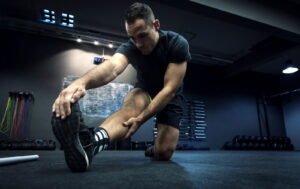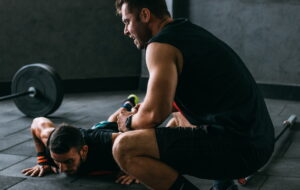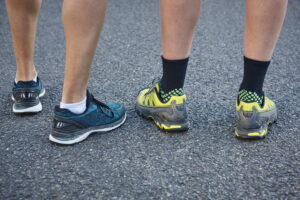When deciding which workout type is best for you, it can be hard to tell the difference between yoga and Pilates. Even though they seem like similar forms of the same workout, there are a variety of variations between the two that appeal to people of different levels of fitness. To make sure you’re getting the most out of your fitness journey, it’s important to be aware of the latest developments and to go past the misleading information that is often available. Take the time to do your research and find out which type of exercise best suits your individual needs.
The Debate
When it comes to wellness, there are two primary options – yoga and pilates. Both aim to strengthen and lengthen the body, thus providing the ultimate mind-body workout. While some prefer one over the other, true fitness gurus know that both have their benefits and can benefit the body in different ways. It is important to understand where each one excels and use them both to the individual’s advantage.
The Truth
Comparing Pilates and yoga can be difficult as both offer tremendous benefit to the user. Pilates focuses on toning and strengthening while yoga is more about increasing flexibility, but both emphasize the importance of core strength and flexibility. Therefore, both forms of exercise are well rounded and provide similar results, making them complementary in providing the user with an overall beneficial experience.
Choosing The Best Exercise For Your Lifestyle
Pilates and yoga are both complex exercises that focus on the complete physical and mental well-being of a person. Therefore, it is important to try different classes, styles and types of each in order to determine the best fitness routine for you. Yoga has different forms, such as Hatha, Kundalini and Ashtanga, and there are several variants of Pilates based on the speed of the class, and the environment it takes place in, such as on a mat or a machine.
Both Pilates and yoga promote overall flexibility, balance, strength, proper alignment, and proper breathing. For them to be effective, active participation is necessary during the workout. This requires the use of all the body’s muscles to gain the best results.
Pilates
Pilates is a form of exercise that emphasizes building strength and control in the core muscles. Invented by Joseph Pilates near the end of WWI, it is believed to have been originally intended as a form of rehabilitation for soldiers suffering from severe injuries sustained in the war. If practiced regularly, Pilates can help to strengthen the core and build tone in the body. The majority of Pilates movements must be performed while on the ground, and the activation of these muscles usually begins with a controlled breath. Pilates can be practiced either with or without the use of equipment, depending on a person’s skill level and fitness goals.
Pilates can help:
- Strengthen your balance through regular exercise.
- Relieve joint pain through stretching and low-impact exercises.
- Raise your endurance and muscle strength with aerobic and strength-training exercises.
- Enhance your posture and flexibility through mobility and stretching exercises.
Yoga
The practice of yoga is rooted in centuries-old traditions and is generally completed in an upright posture for maximum benefit. However, certain forms of yoga embrace other positions for studying balance, flexibility, and stretching the core. As a low impact form of exercise, yoga harnesses the power of bodyweight to increase strength and comfort in the body.
The exact origin of yoga is unknown, but evidence suggests that it has been an active practice for over three thousand years. Many religious practices revere yoga for its focus on diet, breathing, exercise, relaxation, and meditation. Through the practice of deep breathing and mindfulness, yoga provides a bond between the mind and body, stimulating better balance and flexibility with each session.
Yoga can help:
- Alleviate stress and melancholy.
- Diminish signs of multiple sclerosis.
- Relieve arthritis ache.
- Help to decrease hypertension.
- Control chronic agony.
Yo-Pli
Those who choose to practice both Pilates and yoga can benefit from a stronger core, improved balance, and more flexibility. No equipment is necessary; just a simple mat and using your own body weight to perform the exercises. Diaphragmatic breathing and mental concentration are emphasized to reduce tension and create unity between the body and mind.
After working out consistently for a period of time, the returns start to lessen, and combining both disciplines will help support general wellbeing.
Pilates vs. Yoga: Which is right for me?
At the end of the day, both yoga and Pilates provide great workouts that can be adapted to a wide range of skill levels. It’s important to consider your current health before you decide between the two, and if you have any health issues, it’s best to talk to a professional to make sure you make the right choice.
Yoga requires a certain level of mobility and flexibility in the joints, wrists, and spine. While most poses can be modified to suit individual physical capabilities, those with extreme limitations or those who experience significant joint pain may find advanced Yoga courses a challenge. Fortunately, there are several types of yoga available, so you can choose the style that suits you best.
Unlike yoga, Pilates exercises are designed for those with disabilities, injuries, and other health concerns. It offers an array of exercises and programs that target different health issues, fitness goals, and ages. However, to undertake most of the classes and programs available at local gyms, it’s essential to have the right equipment.
Thankfully, most Pilates exercises can be adjusted to suit individual fitness levels and disabilities. When choosing a class or style, it’s important to select the one that works for you, so you can stay safe and enjoy the workout.
What’s Your Choice?
Choosing an exercise program should be based on the results you want to achieve. To make an informed decision, follow this overview of yoga and Pilates so you can decide which one will help you reach your health and wellness goals. Always consult with your doctor first if you have any existing health issues. Both options will result in improved quality of life; however, they do have distinctions, so make sure you weigh out the pros and cons of each.





